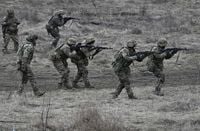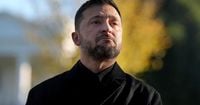On October 17, 2025, the war in Ukraine entered another grim chapter as Russia announced the capture of three villages—Pishchane and Tykhe in the Kharkiv region, and Pryvillia in Dnipropetrovsk. According to statements from the Moscow military command, these gains mark a slow but steady Russian advance in areas previously reclaimed by Ukraine during its rapid 2022 counter-offensive. The symbolic weight of losing Pishchane, a village retaken by Kyiv just three years ago, underscores the shifting momentum on the eastern front. As reported by the Associated Press and other outlets, Russian forces are now pushing to encircle Kupiansk, a strategic logistics hub and a jewel of Ukraine’s earlier battlefield successes.
This grinding war of attrition has come at an enormous human cost. Since February 2022, tens of thousands have died and millions have been forced to flee their homes, leaving behind devastated towns and shattered communities. The fighting in eastern Ukraine has transformed once-thriving settlements into near ghost towns, with only a handful of residents enduring the relentless shelling and privation.
The violence shows little sign of abating. On the same day as Russia’s territorial gains, reports emerged of deadly shelling in the Kherson region. The Moscow-installed governor in Russian-occupied Kherson claimed that “two adults and a 10-year-old child were killed during intense shelling of a residential area” by Ukrainian forces. Meanwhile, Ukrainian officials reported that “one person was killed and 14 were wounded in Russian shelling” in the Ukrainian-held part of the region. These parallel tragedies highlight the war’s cruel symmetry—civilians on both sides continue to pay the steepest price.
Overnight, the air war escalated further. Russia launched a barrage of 70 drones against Ukraine, while Ukrainian air defenses claimed to have shot down 136 out of 164 Russian drones and intercepted three missiles. According to Ukraine’s Air Force, the attacks targeted civilian infrastructure, including a gas station in Sumy, where two women, aged 51 and 53, were injured. Russia, for its part, said it intercepted 61 Ukrainian drones, mostly over western Russia and Crimea. The skies above Ukraine and its borderlands have become a deadly theater, where technology and terror are deployed with increasing frequency and sophistication.
Amid these military developments, diplomacy appeared to flicker—if only briefly. Ukrainian President Volodymyr Zelensky traveled to Washington, D.C., for a high-stakes meeting with U.S. President Donald Trump. Hopes were high in Kyiv that the United States might finally approve the delivery of long-range Tomahawk cruise missiles, weapons that Ukrainian officials believe could shift the balance of power and force Russian President Vladimir Putin to the negotiating table.
Yet, as The Associated Press and MSNBC reported, Zelensky left the U.S. capital empty-handed. The outcome was met with disappointment, but not surprise, on the streets of Kyiv. Roman Vynnychenko, a Ukrainian serviceman, told reporters, “Ukraine won’t get those missiles.” He described the prospect of an American missile deal as a political “game,” adding, “Every day, civilians and soldiers die, buildings collapse, our streets and cities are being destroyed.”
Zelensky himself tried to put a brave face on the setback. In an interview with MSNBC, he remarked, “It’s good that President Trump didn’t say ‘no,’ but for today, didn’t say ‘yes.’” He stressed that the issue of Tomahawk missiles is “a sensitive issue” for Putin, suggesting that the Russian leader “is really afraid that we will use them.” Both Zelensky and Trump agreed not to publicly discuss the specifics of long-range missile deliveries, hoping to avoid further escalation.
Behind the scenes, the diplomatic dance took on a new urgency after a last-minute phone call between Trump and Putin. According to NBC News, Putin made clear his opposition to any missile transfer, and Trump, after the call, announced plans to meet the Russian leader in Budapest, Hungary, in the coming weeks to discuss ways to end the war. While some see a glimmer of hope in these talks, most Ukrainians remain skeptical. As psychologist Victoria Khramtsova told the AP, “We have been at war for more than three years. We just want peace.”
Even as leaders talked, the war’s dangers persisted elsewhere. In the Zaporizhzhia region, Europe’s largest nuclear power plant has been operating on diesel backup generators since September 23, after its last external power line was knocked out in attacks that Russia and Ukraine each blame on the other. On October 18, 2025, the International Atomic Energy Agency (IAEA) announced that repair work had begun to restore the plant’s power supply. Special ceasefire zones were established to allow technicians to work safely. Rafael Grossi, head of the IAEA, called the restoration of off-site power “crucial for nuclear safety and security,” but warned, “as long as this devastating conflict goes on, nuclear safety and security remain under severe threat.” The repairs will occur in two phases, first on the Ferosplavna-1 power line, then on the Dniprovska power line. This marks the 42nd time since the start of the war that power lines to the plant have needed restoration.
On the judicial front, another controversy erupted as a military court in Rostov-on-Don, Russia, convicted 15 captured Ukrainian soldiers from the Aidar battalion on terrorism charges. The men received prison sentences ranging from 15 to 21 years. Ukraine denounced the trial as a sham and a violation of international law, echoing its condemnation of a similar mass trial in March involving 23 Azov brigade members. The Russian human rights group Memorial designated the defendants as political prisoners, arguing that the trial “grossly violates the provisions of the Geneva Convention, which prohibits the prosecution of prisoners of war solely for their participation in an armed conflict.”
The Aidar and Azov battalions, both now integrated into Ukraine’s armed forces, have long been controversial. Russia has labeled them terrorist organizations and accused them of war crimes, though human rights groups and Ukrainian officials insist their prosecution is politically motivated. Most of the Rostov-on-Don trial was held behind closed doors, with journalists only permitted to attend the opening and the verdict sessions.
As Ukraine’s war drags into its fourth year, the situation on the ground remains perilous and unpredictable. Russian advances on the battlefield, continued aerial attacks, legal battles over prisoners of war, and fraught international diplomacy all combine to create a sense of relentless crisis. Despite fleeting moments of optimism, the longing for peace remains unfulfilled, and the people of Ukraine are left to endure the daily toll of a war that shows no sign of ending soon.

